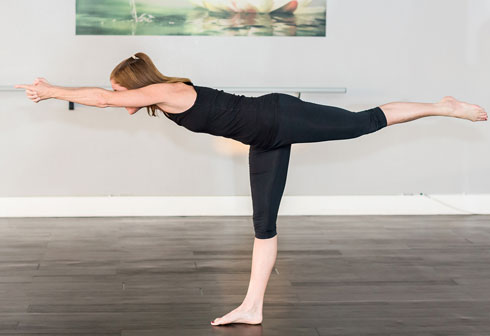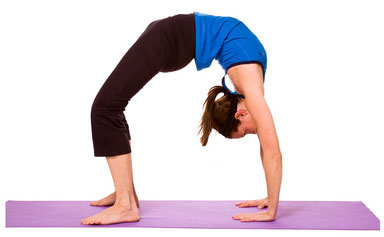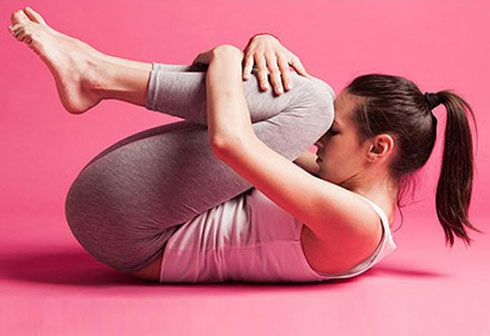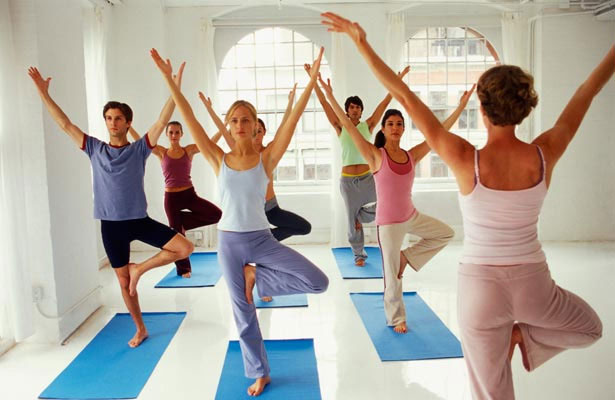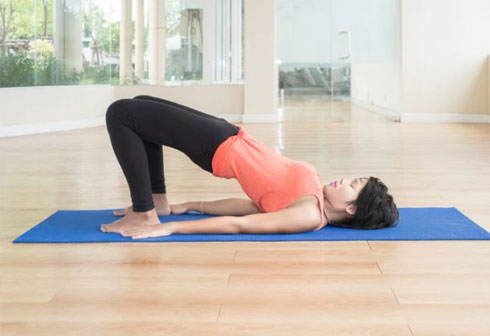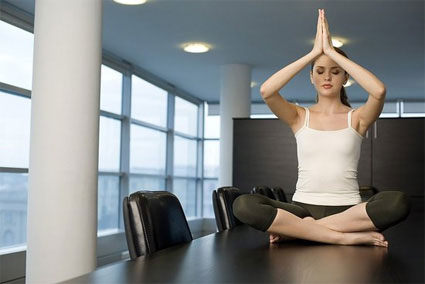Certain asanas in inverted poses have numerous untold benefits. Read on.adho = downward, mukha = face, svana = dog Certain asanas, especially those in inverted poses, have numerous, untold benefits. Adho Mukha Svanasana, or Downward-Facing Dog is one such asana. It looks easy, but then again, looks are often deceptive. Keep your legs shoulder width apart. Slowly, bend down, until your palms touch the floor ahead of you. Exhale while bending. Do not lift your heels off the floor. Dont bend your knees, but at the same time, dont lock them. Spread your fingers wide apart. Now, push your head between your arms, towards your knees. Feel the stretch in your legs. You could also do this the other way around by first getting down on your knees, and then slowly lifting yourself up. Exhale while lifting yourself up. This is, in fact, the right way of performing this asana, but you may find it difficult to place your heels on the floor initially. A good rule of thumb to remember is to exhale when performing any stretch that scrunches the stomach muscles, and inhale when returning to position, or when performing a stretch that expands the stomach muscles. Thus, when bending down, or bending sideways, exhale. But while bending backwards, inhale. This is a completely rejuvenating stretch, and has numerous benefits. It is one of the poses of Surya Namaskar, and it stretches the shoulders, hands, hamstrings, calves and feet. It also strengthens all these muscles. Once you have mastered this exercise, you could try a slight variation. Inhale, and lift one leg up at a time, so it is in line with your torso. Hold the leg up for a few seconds, exhale, and bring it down. This is especially beneficial for menopausal woman, as it helps ease the symptoms associated with menopause. It also prevents osteoporosis and reduces menstrual pain and is hence an asana that is extremely beneficial for women. Other benefits include: Energises the body Calms the mind and induces a state of calm Reduces feelings of depression and anxiety Strengthens the digestive system Strengthens the back muscles, and helps ease backache Helpful for asthma patients and those with high blood pressure Dont do this asana if you have a headache. If you have high blood pressure, make sure you rest your head on a bolster when doing this asana. If you are pregnant and in the last trimester, do not do this asana. Avoid it if you have diarrhoea. After doing this asana, relax by doing the balasana. It is important to know which asana should be performed after a certain asana, so you dont cause damage. Do not do too many complicated asanas without following up each asana with the relevant relaxation asana. Get into vajrasana. Slowly, bend forward until your head in touching the ground. Let your arms be by your side, with your fingers behind your feet. Remain in this position for at least a minute, and allow your body and mind to relax. Balasana is, of course, a relaxation asana, and it can be done before or after any asana.
Certain asanas in inverted poses have numerous untold benefits. Read on.adho = downward, mukha = face, svana = dog
Certain asanas, especially those in inverted poses, have numerous, untold benefits. Adho Mukha Svanasana, or Downward-Facing Dog is one such asana. It looks easy, but then again, looks are often deceptive.
Keep your legs shoulder width apart.
Slowly, bend down, until your palms touch the floor ahead of you.
Exhale while bending.
Do not lift your heels off the floor.
Don't bend your knees, but at the same time, don't lock them.
Spread your fingers wide apart.
Now, push your head between your arms, towards your knees. Feel the stretch in your legs.
You could also do this the other way around by first getting down on your knees, and then slowly lifting yourself up. Exhale while lifting yourself up. This is, in fact, the right way of performing this asana, but you may find it difficult to place your heels on the floor initially.
A good rule of thumb to remember is to exhale when performing any stretch that scrunches the stomach muscles, and inhale when returning to position, or when performing a stretch that expands the stomach muscles. Thus, when bending down, or bending sideways, exhale. But while bending backwards, inhale.
This is a completely rejuvenating stretch, and has numerous benefits. It is one of the poses of Surya Namaskar, and it stretches the shoulders, hands, hamstrings, calves and feet. It also strengthens all these muscles.
Once you have mastered this exercise, you could try a slight variation. Inhale, and lift one leg up at a time, so it is in line with your torso. Hold the leg up for a few seconds, exhale, and bring it down.
This is especially beneficial for menopausal woman, as it helps ease the symptoms associated with menopause. It also prevents osteoporosis and reduces menstrual pain and is hence an asana that is extremely beneficial for women.
Other benefits include:
Energises the body
Calms the mind and induces a state of calm
Reduces feelings of depression and anxiety
Strengthens the digestive system
Strengthens the back muscles, and helps ease backache
Helpful for asthma patients and those with high blood pressure
Don't do this asana if you have a headache.
If you have high blood pressure, make sure you rest your head on a bolster when doing this asana.
If you are pregnant and in the last trimester, do not do this asana.
Avoid it if you have diarrhoea.
After doing this asana, relax by doing the balasana. It is important to know which asana should be performed after a certain asana, so you don't cause damage. Do not do too many complicated asanas without following up each asana with the relevant relaxation asana.
Get into vajrasana.
Slowly, bend forward until your head in touching the ground.
Let your arms be by your side, with your fingers behind your feet.
Remain in this position for at least a minute, and allow your body and mind to relax.
Balasana is, of course, a relaxation asana, and it can be done before or after any asana.

















